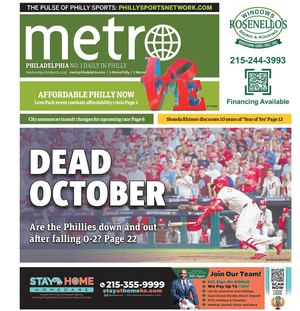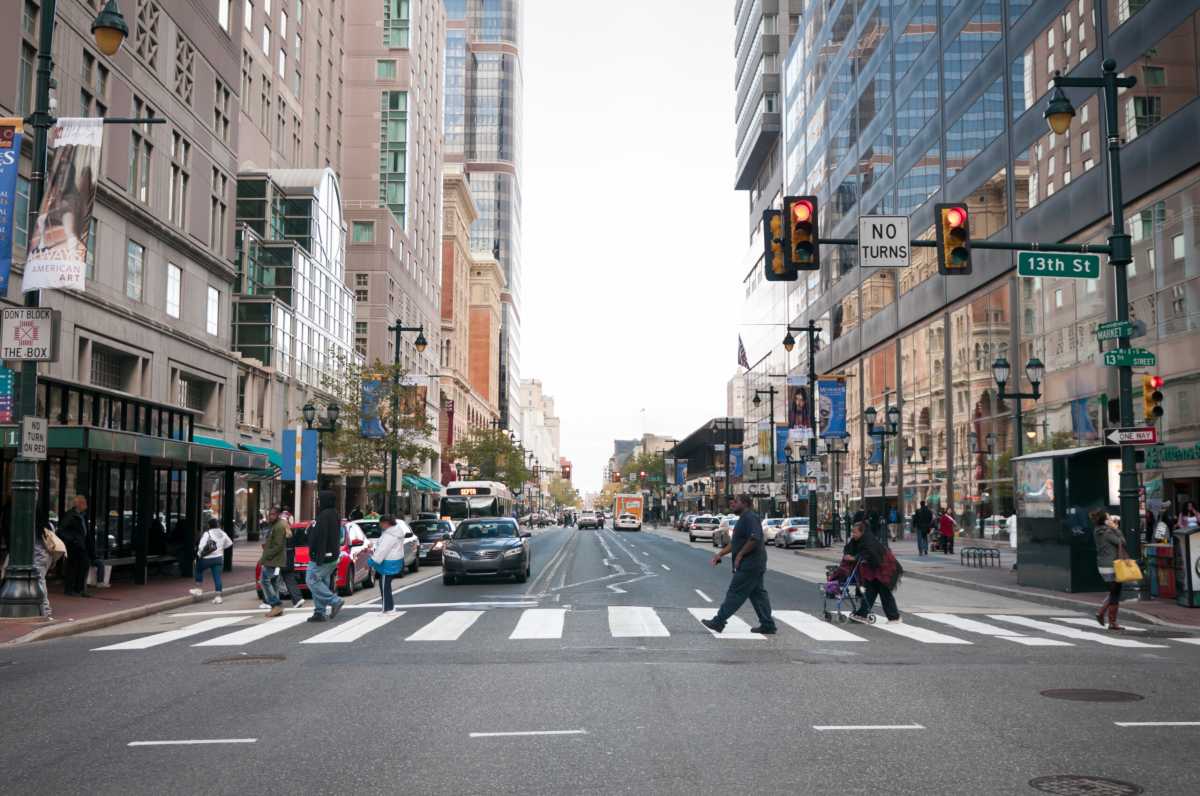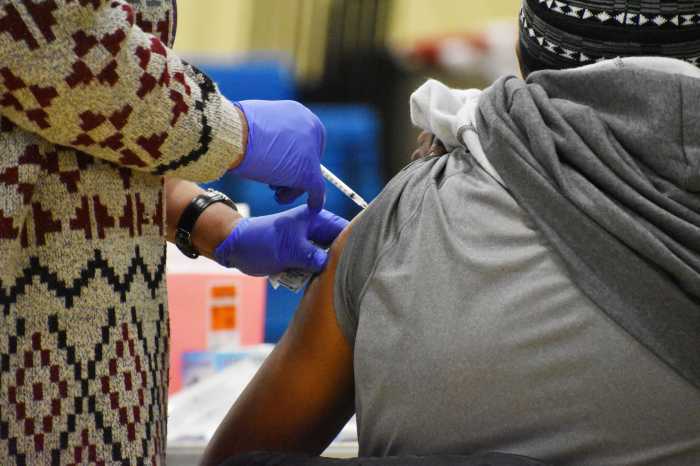Perhaps it is time to stop talking about Philadelphia’s downtown recovering from COVID-19 and getting back to a pre-pandemic baseline, the Center City District posits in a detailed new report.
Instead, CCD leader Prema Gupta suggests, stakeholders could “work to conjure the downtown that we want and that our city needs.”
“We can continue to will our cities to resume the patterns of the last decade, or we can learn from unanticipated strengths and exposed vulnerabilities, and build a downtown that is more competitive, connected, livable, equitable, joyful, resilient and inclusive,” she continues, in the forward to the district’s annual “State of Center City” project.
Even so, and Gupta acknowledges this, much of the 98-page report, which covers a myriad of topics, from arts and culture to public transit, incorporates a lot of comparison data from 2019 – the last full year when Philadelphia was unaffected by the virus.
The number of office workers in Center City, for instance, is down 30% from pre-pandemic totals. Philadelphia’s in-person office recovery rate, though, is sixth highest among the nation’s 25 largest cities, the report states.
Gupta, in her introduction, praises the efforts of large employers, such as Comcast and Independence Blue Cross, along with Mayor Cherelle Parker’s administration, for committing to return-to-office efforts.
Center City’s office occupancy sits at 82%, second only to midtown Manhattan, according to the CCD report. But nearly 4 million square feet of space is now vacant compared to 2019 – equivalent to four empty Comcast Center towers.
A “looming fiscal crisis facing many large office buildings” could affect tax revenues and, ultimately, future municipal budgets, CCD said.
Though serious crime incidents declined nearly 18% between 2019 and 2023 in Center City, more needs to be done to counter negative perceptions of the downtown. Quality-of-life issues, such as the prevalence of dirt bikes and an abundance of panhandlers, also remain issues, the organization said.
“We have heard loud and clear that safety, improving both reality and perception, is a top priority among our stakeholders,” Gupta wrote.
Commuting is not as burdensome when you live nearby, and CCD found that more than 90% of employees who live within two miles of Center City have returned to in-person office work. Only half of those living 10 miles or more away from downtown have come back, cellphone location data shows.
CCD leaders have long pointed out that Philadelphia’s large downtown population serves as a strength.
More than 200,000 people live within ‘Greater Center City,’ which the district defines as between Girard and Tasker avenues. The population of that area has grown 26% since 2011, according to census records.
“Philadelphia leads large U.S. cities in the share of its downtown workforce that lives within just a couple miles of their jobs,” said Clint Randall, CCD’s vice president of economic development, in a statement. “This ongoing concentration of young talent reduces the friction so many feel around commuting and sets up a virtuous cycle for the coming years.”
Developers have been paying attention, with more than 2,800 housing units built in Greater Center City in 2023, a five-year high, the report found.
Storefront occupancy – led by digital brands setting up brick-and-mortar shops – has reached 85% in Center City, compared to 89% before the onset of COVID. Pedestrian volumes are at 84% of pre-pandemic levels, CCD said.
The Center City District employs cleaners; maintains parks; supports business growth; conducts research; runs programming; and provides other services. It is primarily funded through a tax on property owners within the organization’s boundaries.




























